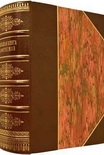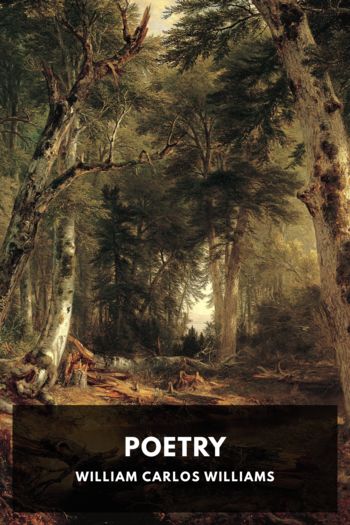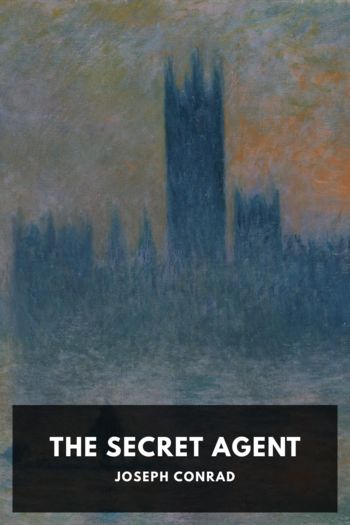Hidden History: Lost Civilizations, Secret Knowledge, and Ancient Mysteries, Brian Haughton [books you need to read .TXT] 📗

- Author: Brian Haughton
Book online «Hidden History: Lost Civilizations, Secret Knowledge, and Ancient Mysteries, Brian Haughton [books you need to read .TXT] 📗». Author Brian Haughton
In June 2002, a major restoration of the shroud was undertaken, which involved the removal of all the medival repair patches. During this process, expert textile restorer Mechthild Flury-Lemberg found that the fabric of the shroud had been woven in a three-to-one herringbone pattern, a type of weave used for high quality cloths in the ancient world. FluryLemberg also pointed out the presence of this same weave pattern on a 12th century illustration depicting Christ's burial cloth, which would suggest that the artist possessed enough knowledge of the shroud to recognize the specific weave pattern of the cloth. She also noted the similarities between an unusual stitching pattern on the seam of one long side of the shroud and that on the hem of a cloth discovered in the tombs of the Jewish fortress of
Masada, overlooking the Dead Sea. The Masada cloth dates to between 40 B.c. and A.D. 73, and Flury-Lemberg believes that the Turin Shroud is of roughly the same age, dating to somewhere in the first century A.D.
It was also during the 2002 restorations that the back of the controversial cloth was photographed and scanned for the first time. In 2004, the Institute of Physics in London published an article in the Journal of Optics A, revealing the results of the analysis of the photographs. Using image processing techniques, Italian scientists Giulio Fanti and Roberto Maggiolio of Padova University identified a faint, ghostly image on the reverse of the cloth, showing mainly the face and hands. This second image corresponds with that on the front of the cloth, and is entirely superficial, thus ruling out the possibility of paint seeping through from the front. It would also appear to rule out the theory that the image on the shroud was created using early photographic methods.
So does this recent reversal of fortune for the Turin Shroud mean that it really is the burial cloth of Christ? Although many believers are convinced that this new evidence is the final proof of the cloth's authenticity, skeptics refuse to admit to the possibilty of the artifact being the real thing. Many researchers now hope that the Vatican will allow more samples to be taken from the shroud for retesting, though the church at present seems reluctant to do so. Perhaps there will never be any scientific proof that the Turin Shroud is beyond doubt the cloth in which Joseph of Arimathaea wrapped the body of Christ. To believe so may always be a question of faith.
The Slone Spheres of Costa Rica
Photograph by Connor Lee. (GNU Free Documentation License).
Stone sphere in the courtyard of El Musco Nacional.
One of the most enigmatic puzzles of pre-Columbian America is that of the mysterious stone spheres of Costa Rica. Hundreds of these stone balls, varying in size from a few centimeters to 7 feet in diameter and the largest weighing 16 tons, have been found in the Diquis region near the towns of Palmar Sur and Palmar Norte, close to the Pacific coast of southern Costa Rica. The majority are fashioned from granodiorite, a hard, igneous rock
similar to granite, but there are a few examples made of coquina, a type of limestone composed mostly of shells and shell fragments.
The spheres first came to light in the 1930s, when the United Fruit Company was clearing jungle to plant banana and other fruit trees. Workers for the company discovered the objects and, remembering a local legend about the spheres being built around a core of gold, blew many of them apart with dynamite looking for the hidden gold. In 1948, Dr. Samuel Lothrop of the Peabody Museum at Harvard University, and his wife, studied the stone balls in context, and in 1963 the final report of the study was published. In his report, Lothrop records a total of 186 examples, although he had also heard of a site near Jalaca that had another 45 balls, before they were taken away to other locations. There have also been finds on Cano Island, 12.5 miles west of the southern Pacific coast. On this evidence it seems that there were once several hundred of these stone sculptures in existence. Since the 1940s, most of the balls have been removed from their original context, often being transported by rail all over the country. Today, only six are known to remain in their original positions. Some can be seen displayed in the National Museum, and several are in parks and gardens in the country's capital, San Jose.
Scholarly research into the Costa Rica stone spheres has been going on for more than 60 years. It began in 1943 with a study of the objects by archaeologist Doris Zemurray Stone, daughter of Samuel Zemurray, founder of the United Fruit Company. She examined the stones directly after they were discovered by workers for the Fruit Company. Stone, later to become the director of the National Museum of Costa Rica, published her findings in the journal American Antiquity in 1943. The study contains plans of five sites, including 44 stone balls, and her interpretation was that the spheres could have served as cult images or cemetery markers, or were perhaps connected with some kind of calendar.
The publication of the Lothrops' study in 1963 includes maps of sites where the spheres were found, and comprehensive accounts of pottery and metal artifacts found in association with and in the vicinity of them. Also included are numerous photographs and drawings of the spheres, including measurements and notes on their alignments.
Further archaeological excavations in the 1950s found the stone spheres associated with pottery and other artifacts known from the preColumbian cultures of southern Costa Rica. There have been various other studies made since then, the most thorough being that of archaeologist Ifigenia Quintanilla of the National Museum of Costa Rica, from 1990 to 1995. Archaeologists have long puzzled over





Comments (0)